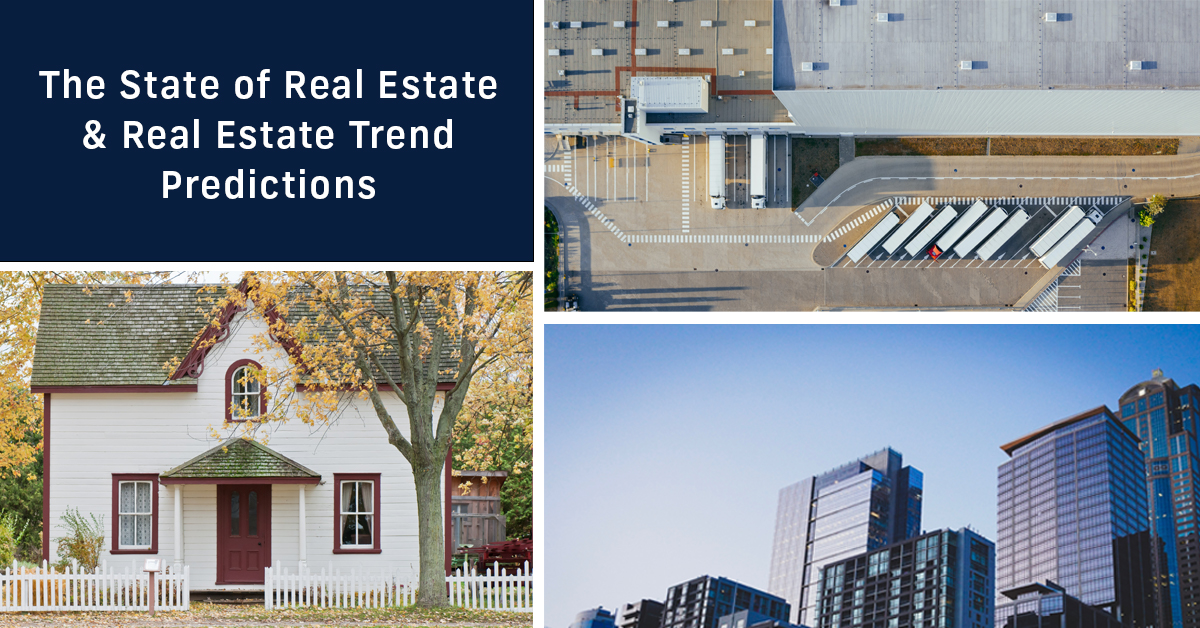How the Pandemic Impacted Residential Real Estate
At the height of social distancing and lockdowns, residential real estate suffered. Fewer homeowners finalized putting up homes for sale as concerns over in-person showings, crowds, and improper sanitation peaked. Many potential buyers joined the Great Resignation or faced new financial challenges that prevented them from buying a home. However, the pandemic and 2021’s Great Resignation also popularized a preexistent but unstandardized concept at the time: fully remote work.
Remote work and remote learning became the national industry standard for the majority of 2020 and 2021 in the United States. Kitchen counters replaced corner offices, and Zoom calls became the new meeting rooms. Hundreds of thousands of people spent more time than ever before at home. Consequently, a real estate trend as old as time surged: relocation. Proximity to the office doesn’t matter when the office is your home, which is why so many Americans relocated to more affordable, exciting, innovative, lucrative, or luxurious locations as they Zoomed into work and school.
The housing supply was low before the pandemic, but once the relocation bug bit the country, demand soared while the supply of homes dwindled. Buyers made offers well over asking price for properties in their dream locations. Despite the Federal Reserve’s efforts to keep mortgage rates low by lowering the federal funds rate, affordability in the housing market suffered. Home price growth increased by 18% in October 2021 compared to October 2020 according to the latest CoreLogic Home Price Insights report.
The United States’ home price growth year over year stayed at 18% in October 2021, and Florida’s home price growth percent change hit 24.4%.
In line with the country’s overwhelming desire for relocation to sunny shores, Florida’s year over year home price percent change from October 2020 to October 2021 surpassed the national average and hit 24.4%.
How the Pandemic Impacted Commercial Real Estate and South Florida
The residential real estate market briefly stalled and then spiked because of the pandemic. The commercial real estate market was similarly impacted, particularly in the office, industrial and land sectors.
At the onset of social distancing and work-from-home orders, office real estate seemed to suffer. However, as companies slowly called for employees to return to the office – either fully or in hybrid settings – demand for office real estate returned too, though key selling points changed. Companies no longer seek office spaces with pristine common areas or futuristic lounges. Instead, companies consider technological capacity for remote workers, air-flow quality for in-office workers and whether a space is designed to facilitate safe social distancing.
The commercial real estate market has also followed the relocation trend. Finance and tech companies continue to migrate to South Florida, particularly Miami, in pursuit of tax benefits, warm weather, office and warehouse space and land. With such high demand for commercial and residential spaces in Miami, it’s no surprise that the city surpassed Los Angeles and became the second most expensive place to live in the United States according to the October 2021 Housing Affordability Index by RealtyHop.
Second only to New York, Miami is now one of the most expensive places to live in the United States.
The industrial and land commercial real estate sectors are also experiencing increased demand. Commercial real estate services company JLL estimates that approximately 96% of industrial space in the United States is already in use according to CNBC. As e-commerce continues to surge in popularity, the United States may require another 1 billion square feet of industrial space by 2025.
With current industrial spaces so close to maximum occupancy, the demand for more warehouses is driving up demand for land as well. Brick-and-mortar and e-commerce retailers alike seek land for storage space in anticipation of future supply chain disruptions like those experienced in 2020 and 2021.
3 Real Estate Predictions for the Future
While it may seem like all the sectors of real estate and the United States’ economy are intersecting and driving major demand for scarce supply, the relocation residential and commercial booms will eventually subside.
Here are three predictions for the future of the markets taken from experts in the field and key speakers at the inaugural REact 2021 conference hosted by the Hollo School of Real Estate at Florida International University:
- National home price growth will slow and stabilize.
While home price growth drastically increased this year, the monthly price growth in 2021 has slowed since its peak in April. Experts anticipate that the growth rate will stabilize in 2022. - Affordability will impact residential real estate in Miami.
According to Anthony Graziano, CEO of Integra Realty Resources, the influx of companies, company staff and investors to Miami will impact affordability for current and future residents and local employees.
“Two years ago, we were having a conversation about South Florida being a really expensive place to live and asking what we could do about it. I’m telling you it’s going to get worse,” said Graziano. “We’ve seen the size of leases grow over the last 6-12 months. There are leases being signed that are breaking records in terms of lease rates. These are 20-, 30-, 40-thousand-foot leases. There are real companies that are making an investment here, but when that happens, that’s going to affect affordability because they’re going to start to create jobs with more people that need a place to live. When that happens, it will drive up affordability.” - Construction of multi-level warehouses will increase to meet demand.
Factoring in the continued rise in e-commerce, the lack of supply for industrial space and land, and the current and looming supply chain disruptions, warehouse construction may quite literally look “up” to meet demand.


